
 |
|
#16
|
||||
|
||||
|
Thanks from another AGFer that is quietly following along.
|
|
#17
|
|||
|
|||
|
Can never underestimate the magic feeling of a finished guitar that resonates with you or the makers who use their ears to access a set but measuring the scientific info of the sounds of the particular wood is really interesting to me.
WOW!!! Quote:
__________________
Loef Black Limba/ Swiss Spruce OO 9/2023 Fiery Nina Don Musser OM Brazilian Rosewood/ Colorado Engelman (Private Blue Spruce) #324 8/18/2015 Manuel Rodriguez Classicals: FC: IR/Ced, E: IR/Ger Spr, E:Madagascar Rose 2ply/Ced Kremona Romida RD-S Classical EIR/Eur Spruce Maya C115 Japan |
|
#18
|
|||
|
|||
|
There is a site that generated sonic spread of Highs, Mids & Bass for a sample of a particular wood.
I found it interesting that redwood seemed to be bass heavy as compared to the spruces. This does not mean that redwood would generate more or deeper bass but only that in it's spread of frequency there would be more response on the bass??? *Redwood (Sequoia sempervirens, endl) H=3.7, M=3.5, B=4.5, S=3.7, OP=3, T=4 Engelmann Spruce Western North America (Picea Englemannii, also Picea abies/excelsa (European) H=3.5, M=3, B=4, S=3.7, O=3.2, T=2 *Carpathian Spruce (picea abies) H=3.8, M=3.5, B= 4.5, S=3.7, OP=3.5, T=4 *Lutz Spruce Sometimes called picea lutzii, but is actually a hybrid (Englemann +White Spruce) H=4, M=3.7, B=4.5, S=3.5, O=3.2, T=3 Sitka Spruce NW North America H=3.5, M=3.2,B=4.5, S=3.5,O=3.2, T=4.2 German Spruce is of exactly the same species as Alpine or Italian Spruce, but is different in sound because of the high regions the Alpine Spruce grows in. Alpine Spruce is just a bit warmer in color and the winter grain, when visible, is a bit pinker. Tonally, it is said be more focused with a slightly stronger fundamental than regular German Spruce a rating scale from the Elly Guitar site in which their ratings are given a numerical form of from 1 to 5. These numerical renditions of Highs ("H"), Mids ("M"), Bass ("B"), Sustain ("S"), Overtones ("O"), and Tone ("T") can give you a sense of the kind of sound which may be expected from any given wood. Remember, there is a vast amount of overlap and difference between each wood, each builder, and how they handle the woods. Like most everywhere here, we discuss in very broad generalities. You may wish to visit Elly Guitars and see for yourself their more graphical way of presenting this kind of material. http://tonewooddatasource.weebly.com...tails-c-g.html
__________________
Loef Black Limba/ Swiss Spruce OO 9/2023 Fiery Nina Don Musser OM Brazilian Rosewood/ Colorado Engelman (Private Blue Spruce) #324 8/18/2015 Manuel Rodriguez Classicals: FC: IR/Ced, E: IR/Ger Spr, E:Madagascar Rose 2ply/Ced Kremona Romida RD-S Classical EIR/Eur Spruce Maya C115 Japan |
|
#19
|
||||
|
||||
|
Hello everyone
One the most recognizible features of my instruments is the overhang neck, and the bent upper bout soundboard: 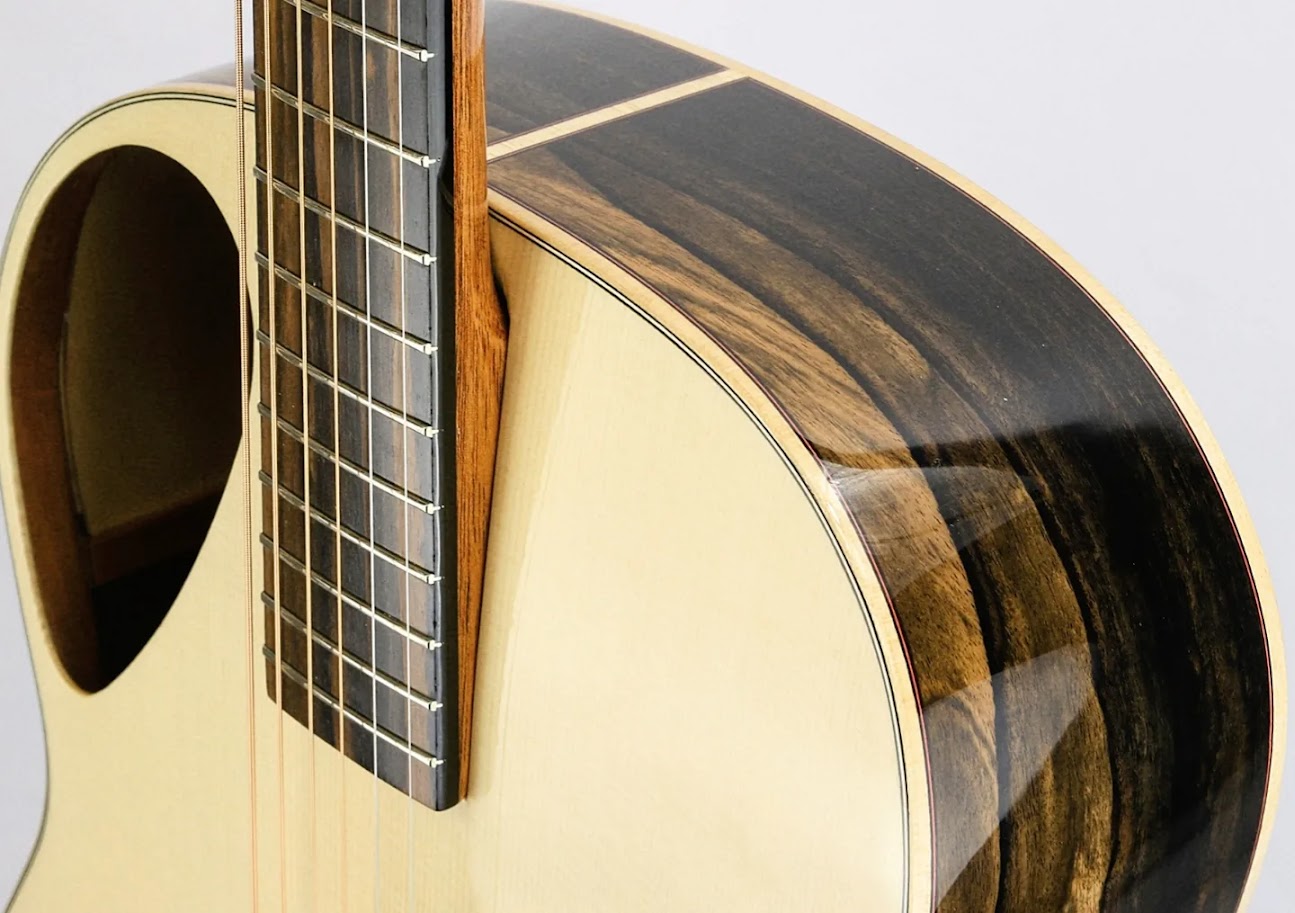 This solution brings several improvements: - playability on the upper frets - stability of the neck geometry (only one straight billets of neck blanck, up to the higher frest). - simplicity of servicing (bolt-on neck) - great tone and sustain on higher frets (frets 15th to 20th resting over the solid body of the neck). - no caving of the upper bout of the body (no central hole, and the curve is increasing rigidity of the upper bout of the body). And yes, I love the look of the neck inserting into the soundboard, and the clean curves of the sides, without heel. It's a beauty to see, and a pleasure to hold, and play. The downside is a slightly increased weight due to the bolts and the dimensions of the headblock (in any case, I dont build light guitars...), a little more complexity of build, and the presence of a cover on the back (someone should prefer the clean look of the back without any added element). The soundboard is bent after final thicknessing, with a jig designed for this purpose, using heat blanket: 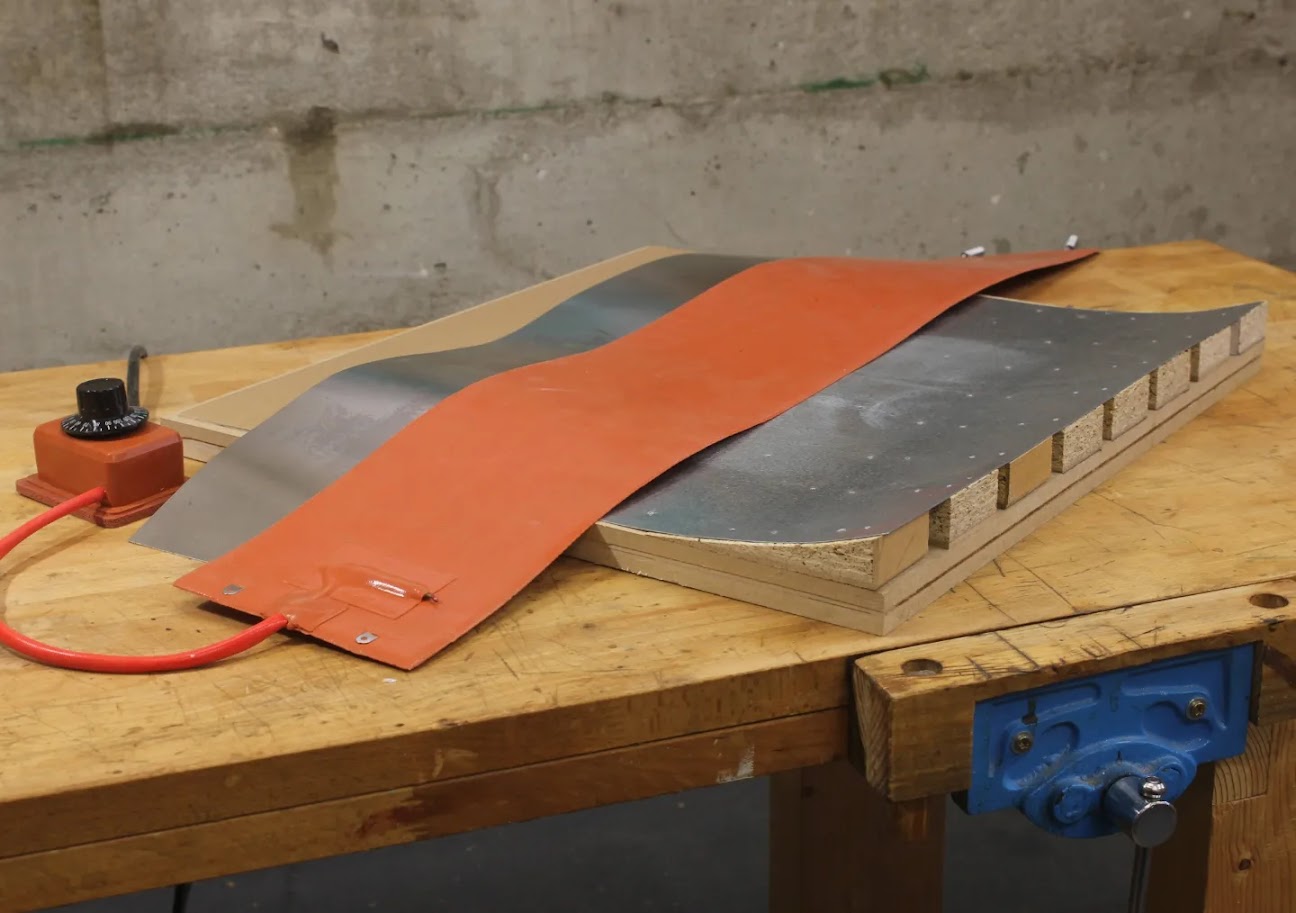 in a three stages operation, with low humidity and a blanket temperature lower than usual:  here is the soundboard after the treatment, waiting to enter in the bracing cabin: 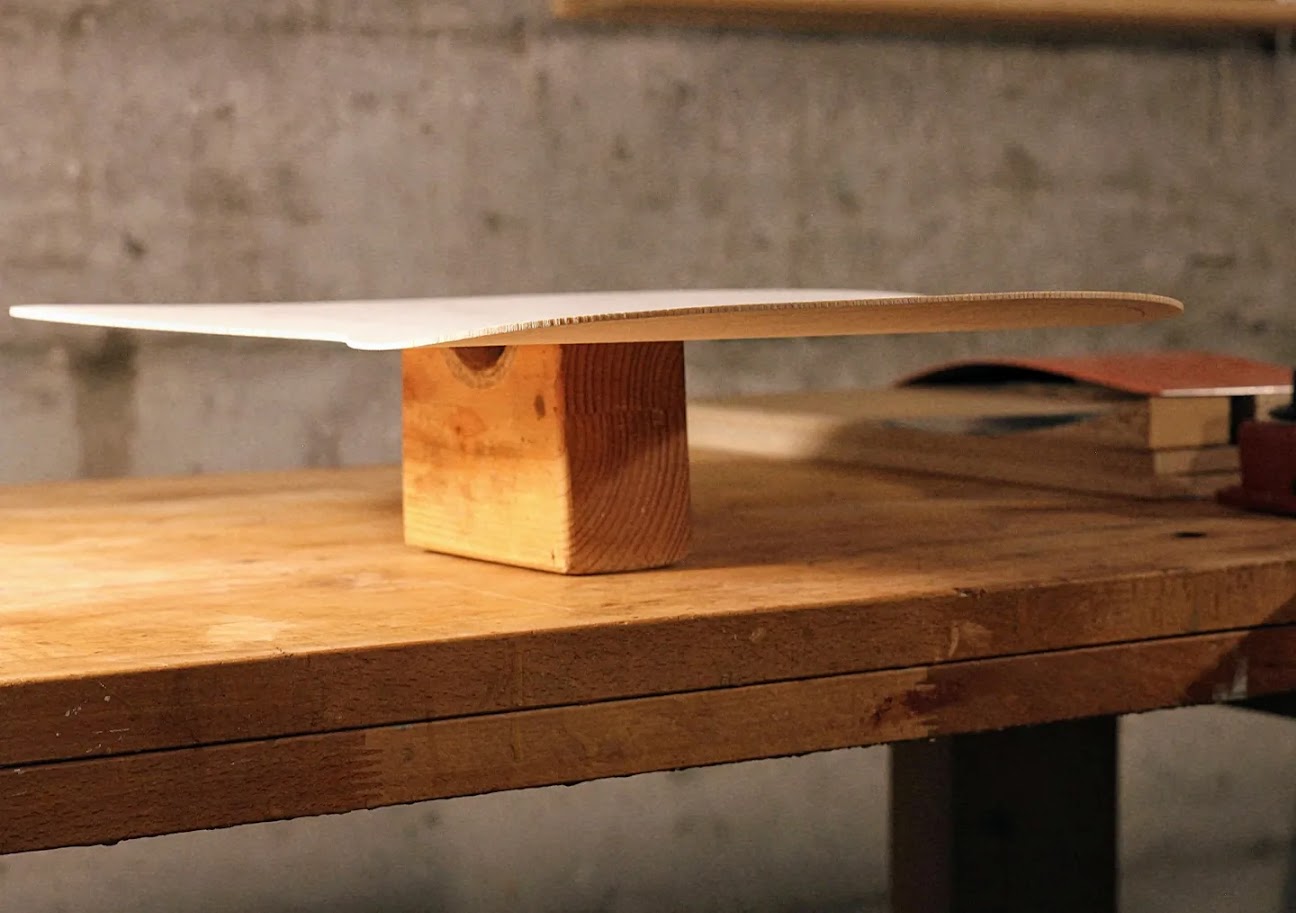 Cheers, Giuliano |
|
#20
|
|||
|
|||
|
Giuliano, fascinating work! Thanks for sharing the details.
|
|
#21
|
||||
|
||||
|
Hello everyone.
The build is proceeding smoothly. As I am not full time on the workshop, my rhythm is slower than that of other builders, nevertheless I am finishing the bracing of soundboards and back, and it is time to share with you some details about the bracing design, and how it impacts and defines the performances of the Orchestra guitar. The first purpose of soundboard bracing is of course to build a structure able to support the static load that comes from the string tension. The secondary, but equally important role, is to define the vibroacoustic behavior of the soundboard, therefore:
The main parameters define the basic character of the instrument (fingerpicker VS. flatpicker, responsive VS. smooth, bluesy VS. smiley, etc.…), while the shape of bracing (and therefore of the main modes) is responsible of how the instrument radiates acoustic energy around; I tend to prefer asymmetric multipoles, as I believe this brings more richness of timbre and overtones, and this is why the bracing I am developing is asymmetric. 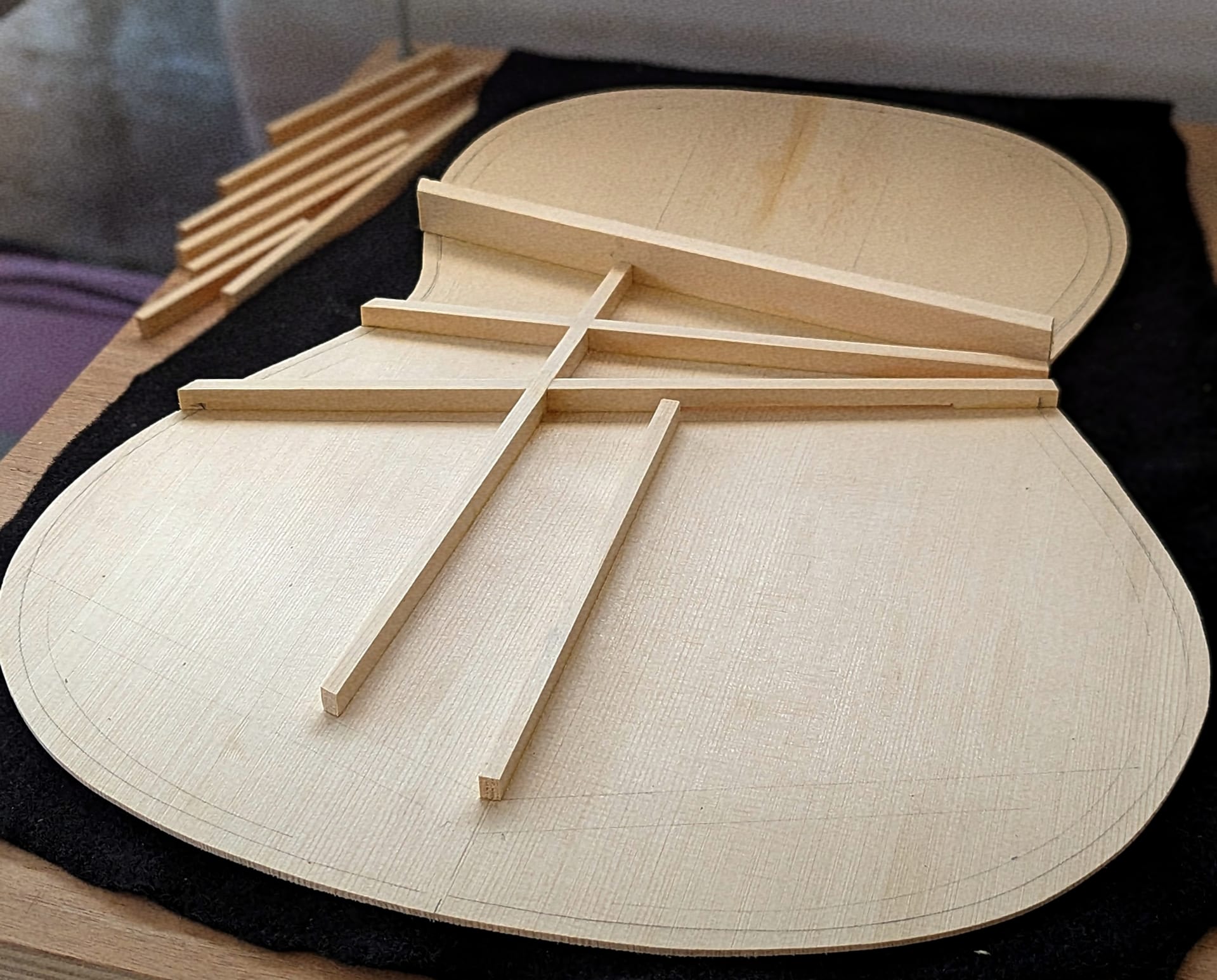 Here above is the main structure of the bracing, a T-Fan assembly, where the three horizontal braces are ensuring structural stability, while the two bigger longitudinal braces are responsible for most of the flexural rigidity of the soundboard. This geometry optimizes the mass to strength ratio of the lower braces, that I eventually tweak to perfectly tune the frequencies of the main modes once the soundboard is glued to the sides. Here's the almost finished bracing, on a 5 fan schematic: 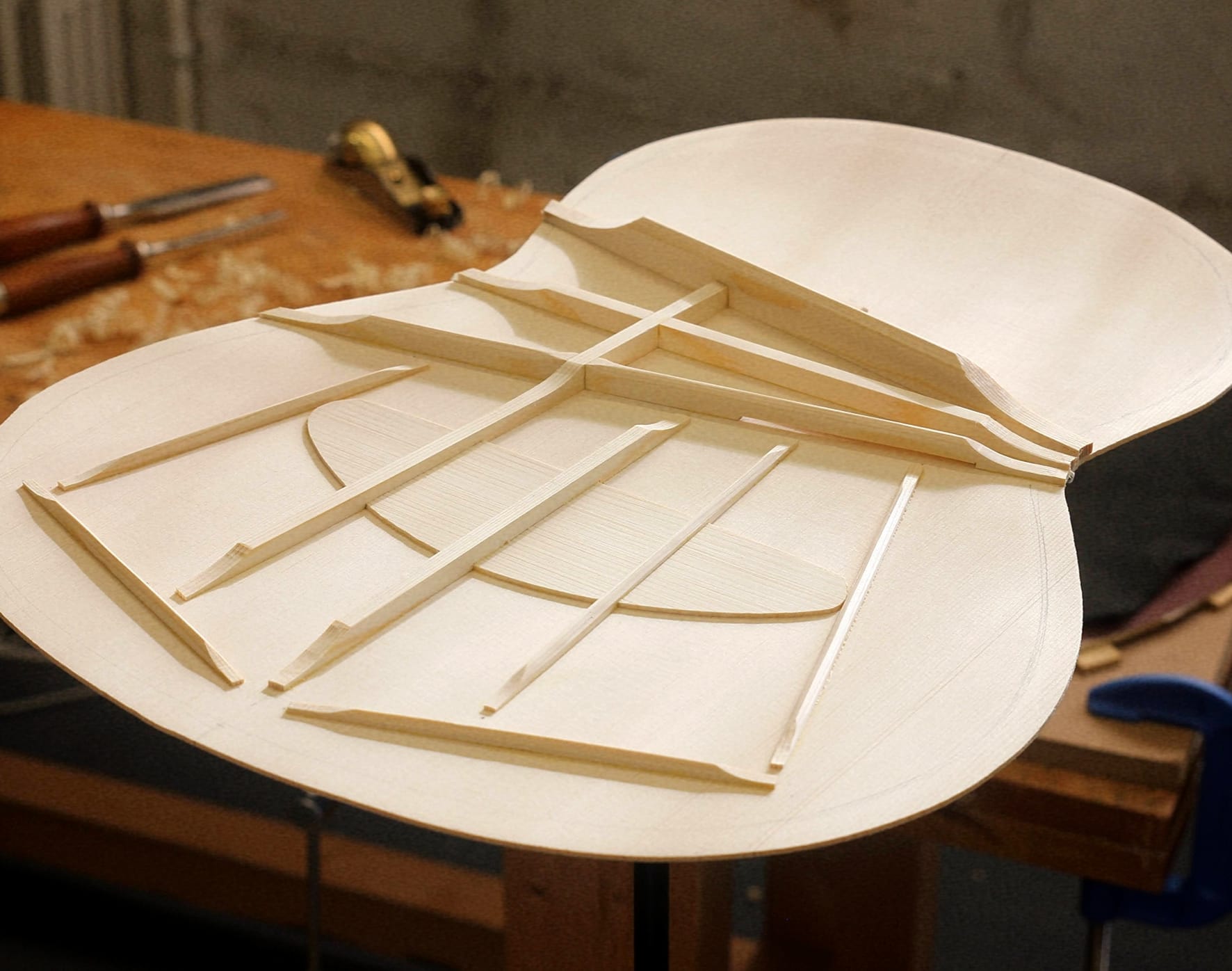 The asymmetry of multipoles is pushed mainly by the lower two horizontal braces (the second one is also half flying, as per Fleta’s design), and here you can see their shapes: 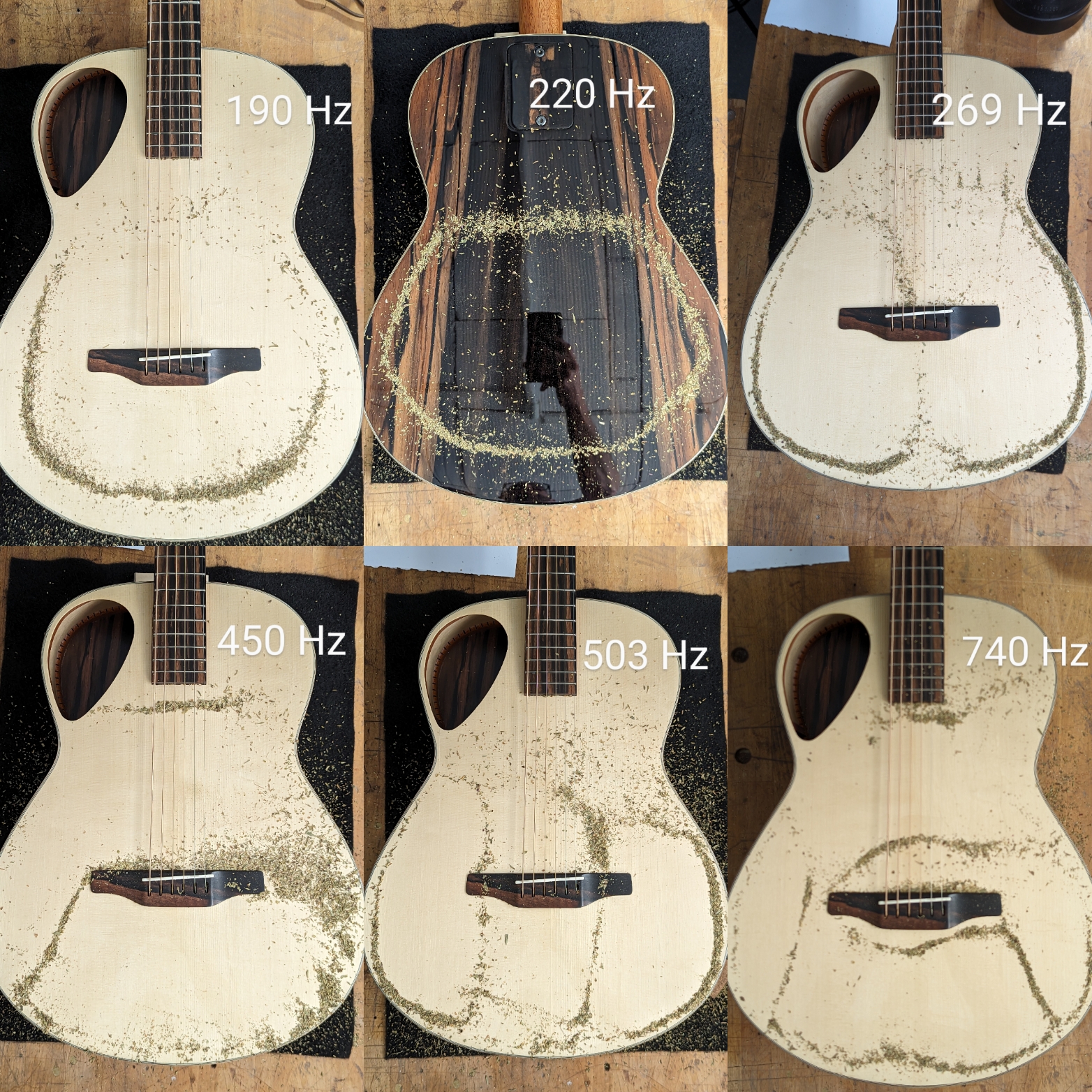 Here as a reference the frequency response of the instrument, to check how the modes are related to the peaks they produce: 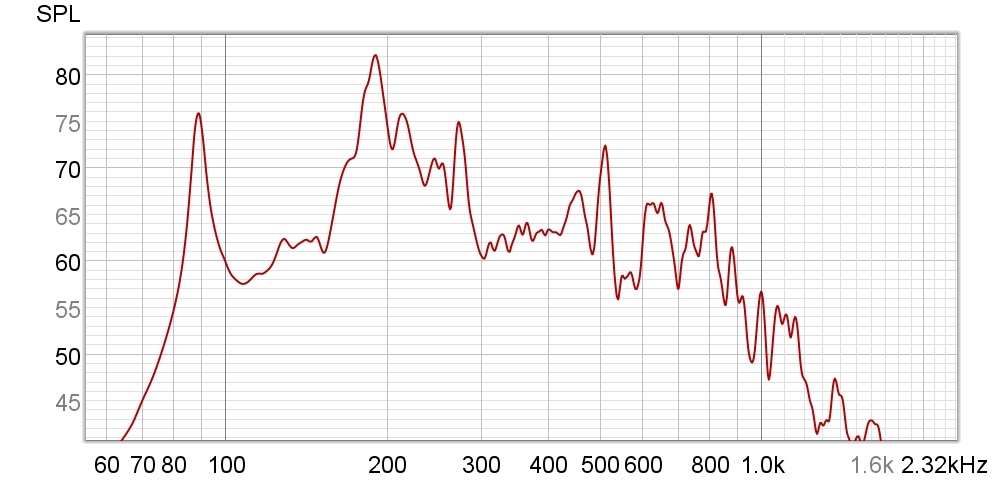 Note the active back around 220 Hz with its contribution very clear on the frequency response, and the regular distribution of multipoles the whole midrange. This behavior, this frequency response with several distinct peaks, ensures vibrational energy (and radiated acoustic energy) over a broad spectrum, a rich tone and plenty of harmonics. The bracing design can be realized in two iterations: 5 Fans schematic, to obtain lower flexural rigidity, it brings a more mellow sound and propension for delicate styles and fingerpicking. 7 Fans schematic, to get hgher flexural rigidity, for tighter, punchier character: 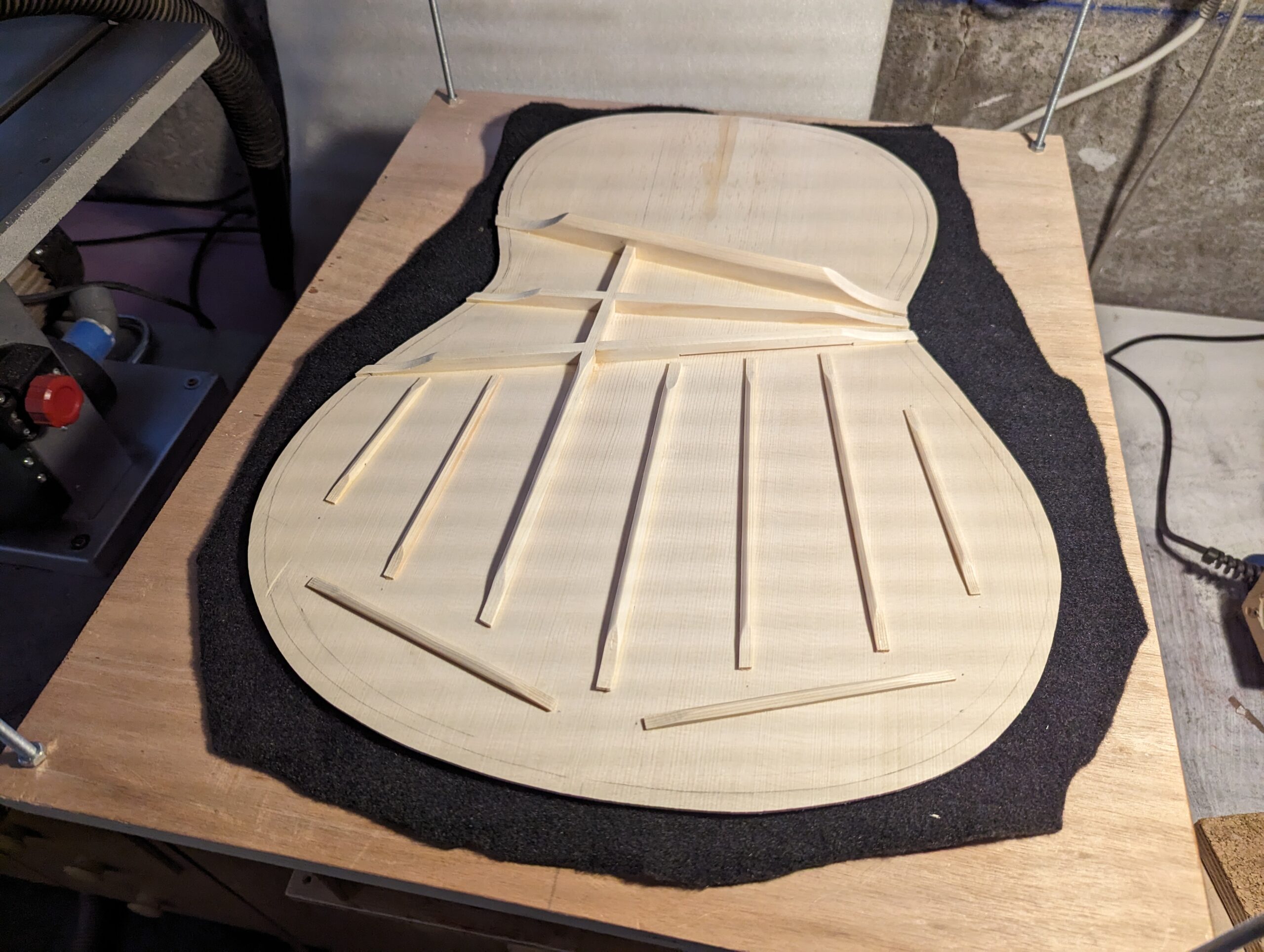 The rotation of the bridge with these bracings is well under 1.8 degrees, which I believe to be a good compromise for an all-wooden bracing system and will ensure longevity and stability of the instrument. Please let me know if you’re interested in more details on this matter, and thanks as usual for being there, following this build. Cheers, Giuliano |
|
#22
|
|||
|
|||
|
Very interesting, Giuliano. I’ve never seen that bracing pattern before.
Your book should be arriving pretty soon. Looking forward to reading it! |
|
#23
|
||||
|
||||
|
Hello everyone!
Before proceeding with the sides and closing the box, I usually prefer to assemble the neck and leave it some time on the shelf to stabilise. The neck blank are usually made with FSC south american mahogany, with a scarf joint: 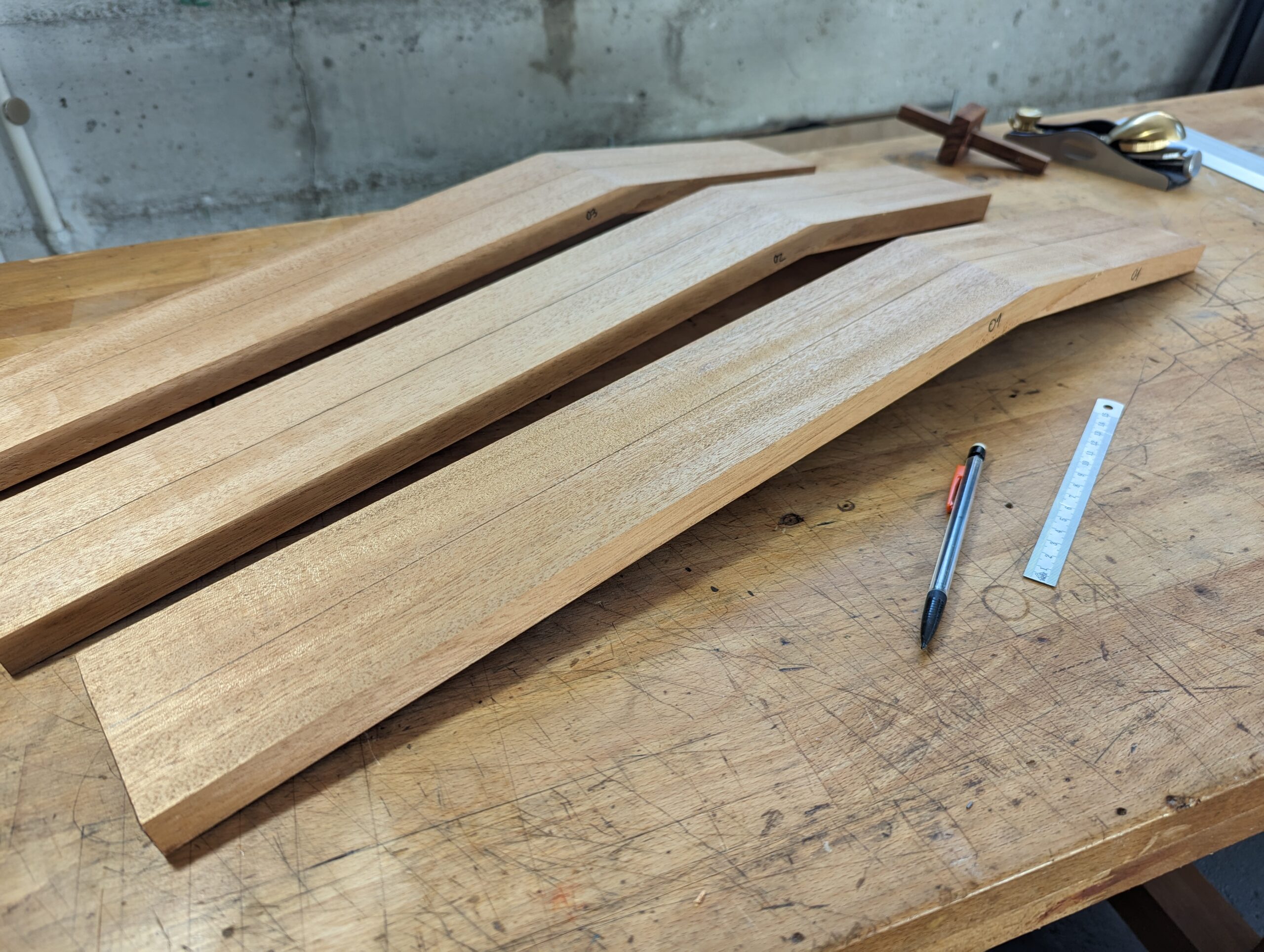 I install a double action trussrod, and a symmetrical pair of unidirectional carbon fiber rods: 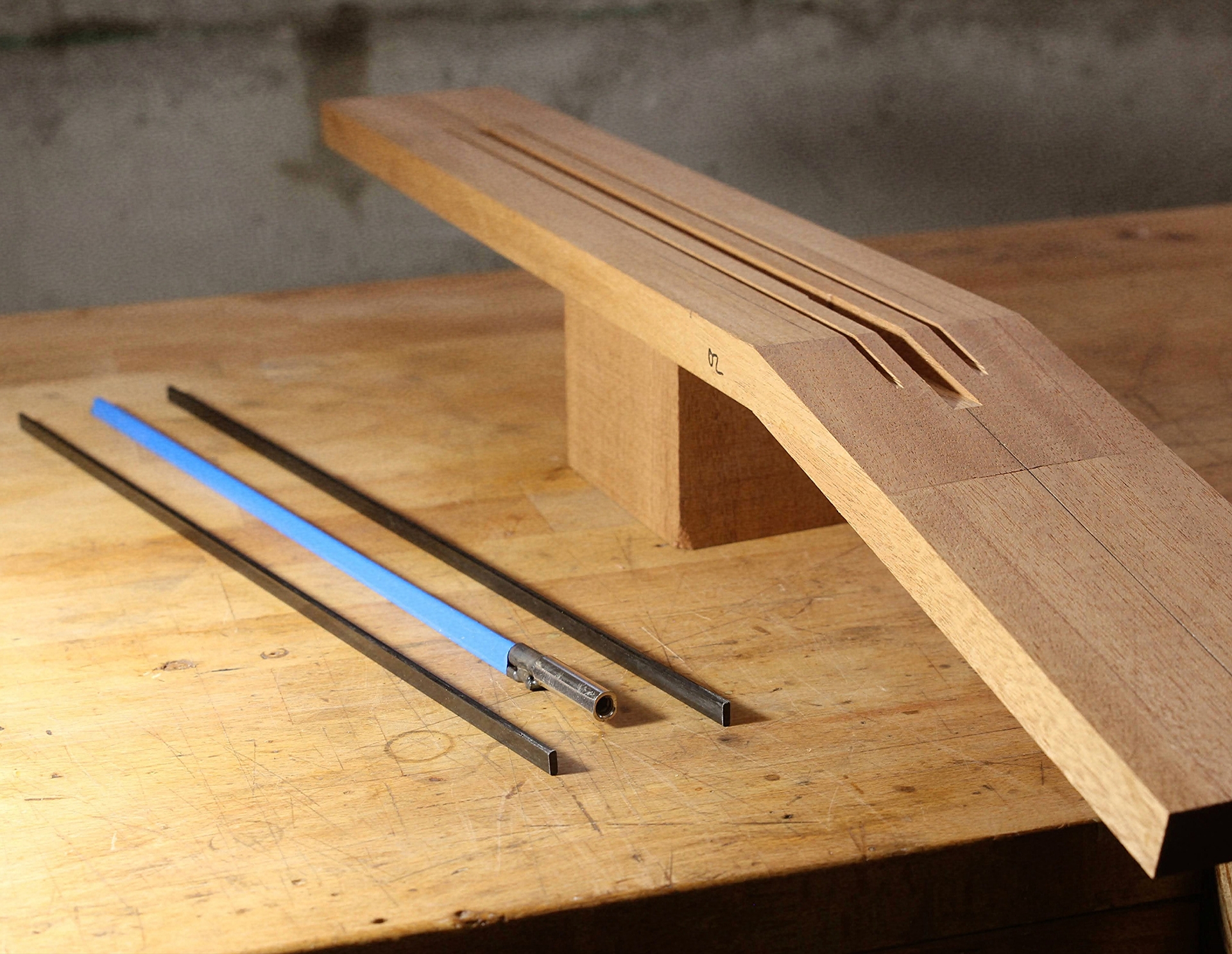 On the peg head I like to use a double veenering with a classic volute, to increase solidity and stiffness. This parameter can help to increase mechanical impedance of the strings on the nut, therefore optimising string resonance, in amplitude and sustain. Of course this is just a feeling, but it makes sense and I like this solution, so I am happy with it! For this twin build, I used two different woods: Zebrawood and Birdseye Maple. What is your choice? 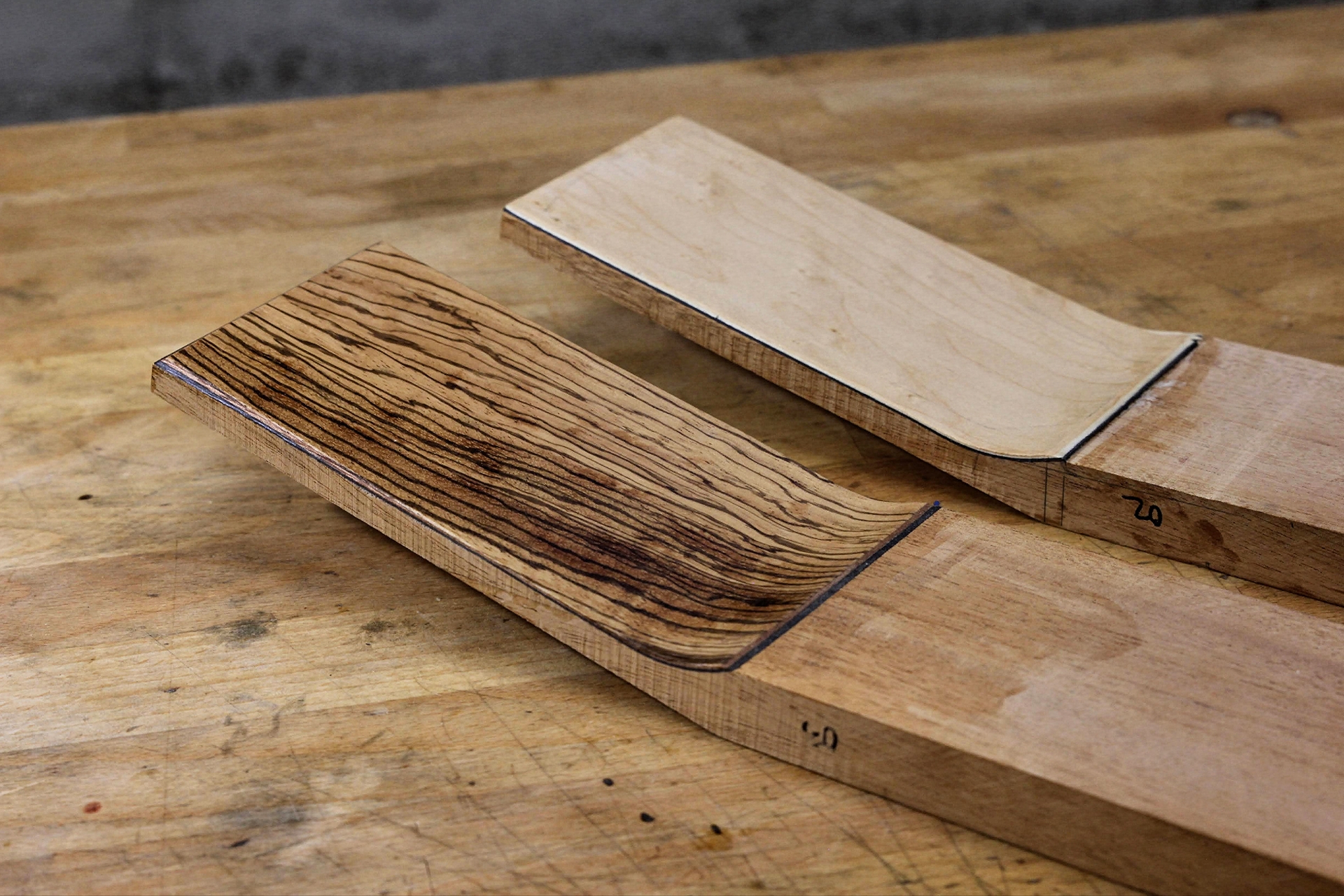 Here's my logo in mother of pearl, ready to be inlayed:  When I was young and idealist I used to make it by hand; nowadays I have a small CNC dedicated to this task, and I love watching it work at my place.  This is the final inlay, on a FSC exotic ebony headplate: 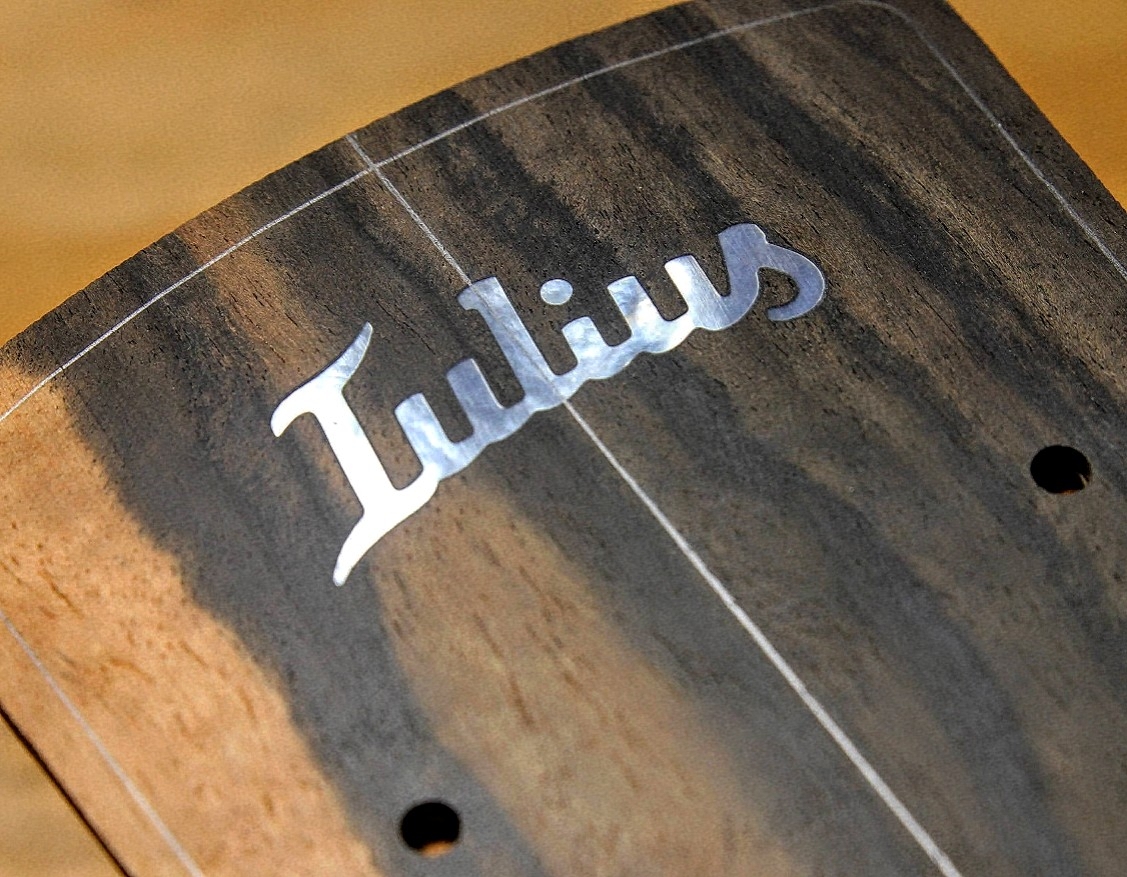 And here a pair of headplate with a different design: 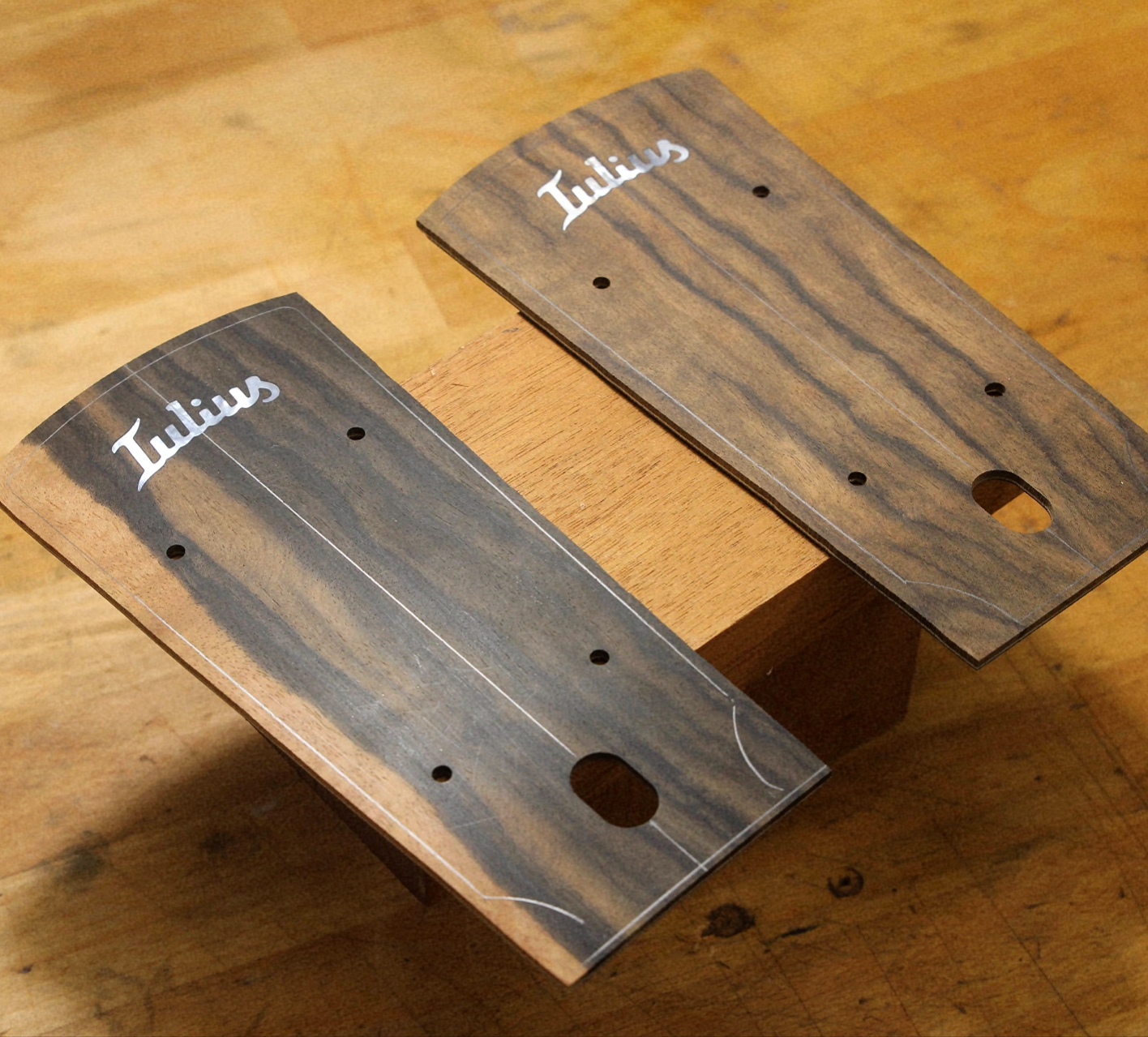 Do you prefer it one piece, or bookmatched?  Cheers, Giuliano Last edited by Giuliano Nicoletti; 02-13-2024 at 10:00 AM. |
|
#24
|
|||
|
|||
|
Difficult to choose! Both are quite good looking!
__________________
Franklin Jumbo African Blackwood/German Spruce Franklin Dread Mahogany/Adirondack 1929 Martin 2-17 |
|
#25
|
|||
|
|||
|
They both look great, but one piece would be my choice!
__________________
2013 Stehr Auditorium (Carpathian/Myrtle) 2015 Stehr Auditorium (Adi/BRW) 2020 Baranik Meridian (Blue Spruce/Manchinga) 2020 Wilborn Arum (Tunnel 14/Coco) 2021 Kinnaird Graybeard (BC Cedar/Bog Oak) 2022 Kinnaird CS Student Build (Adi/Padauk) 2023 Kinnaird FS (Italian/Koa) |
|
#26
|
||||
|
||||
|
Hello folks!
The build is going on, with the two necks almost finished (I am soo slow...): 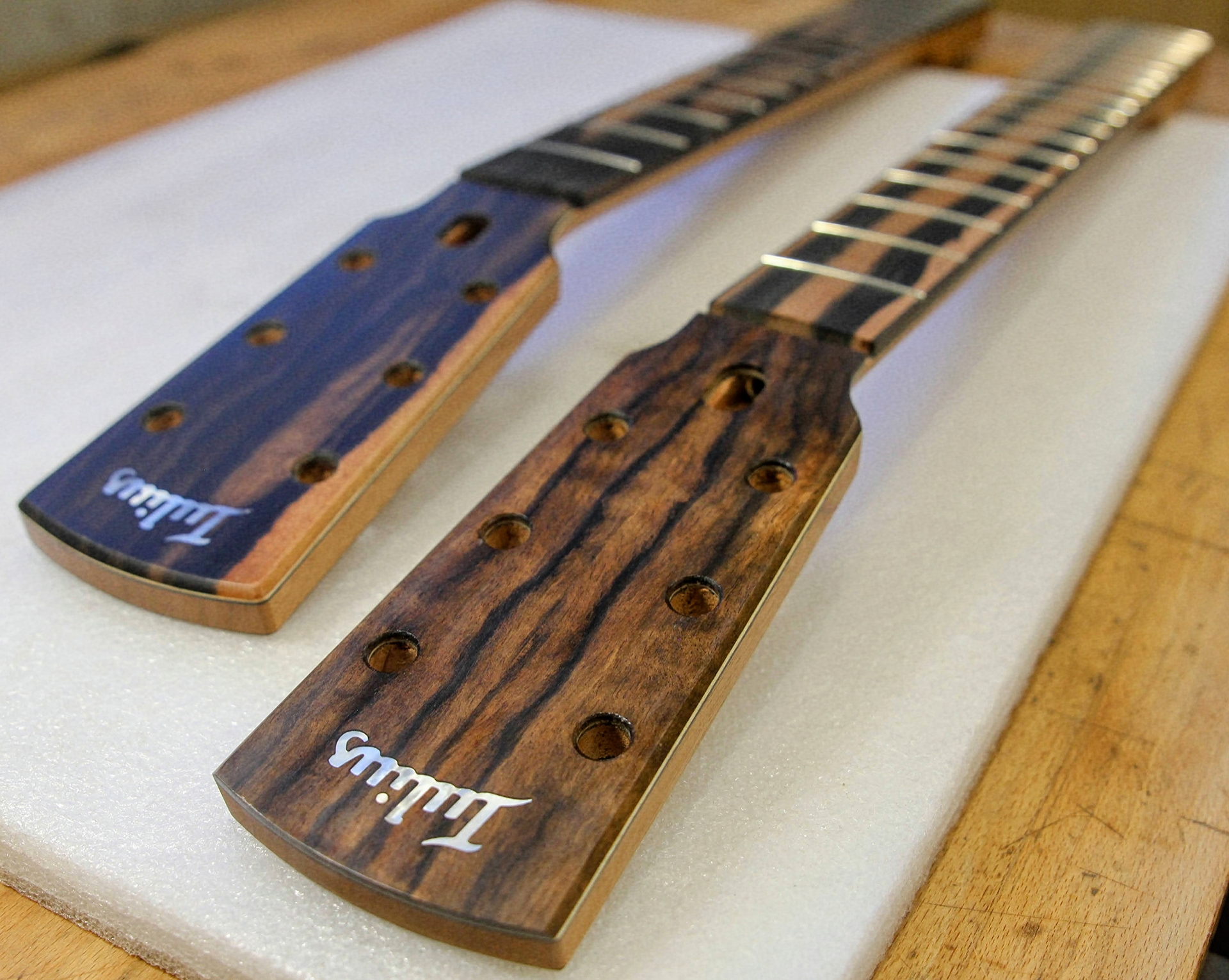 How did I get there? First, the installation of MOP side dots (I love their simple look): 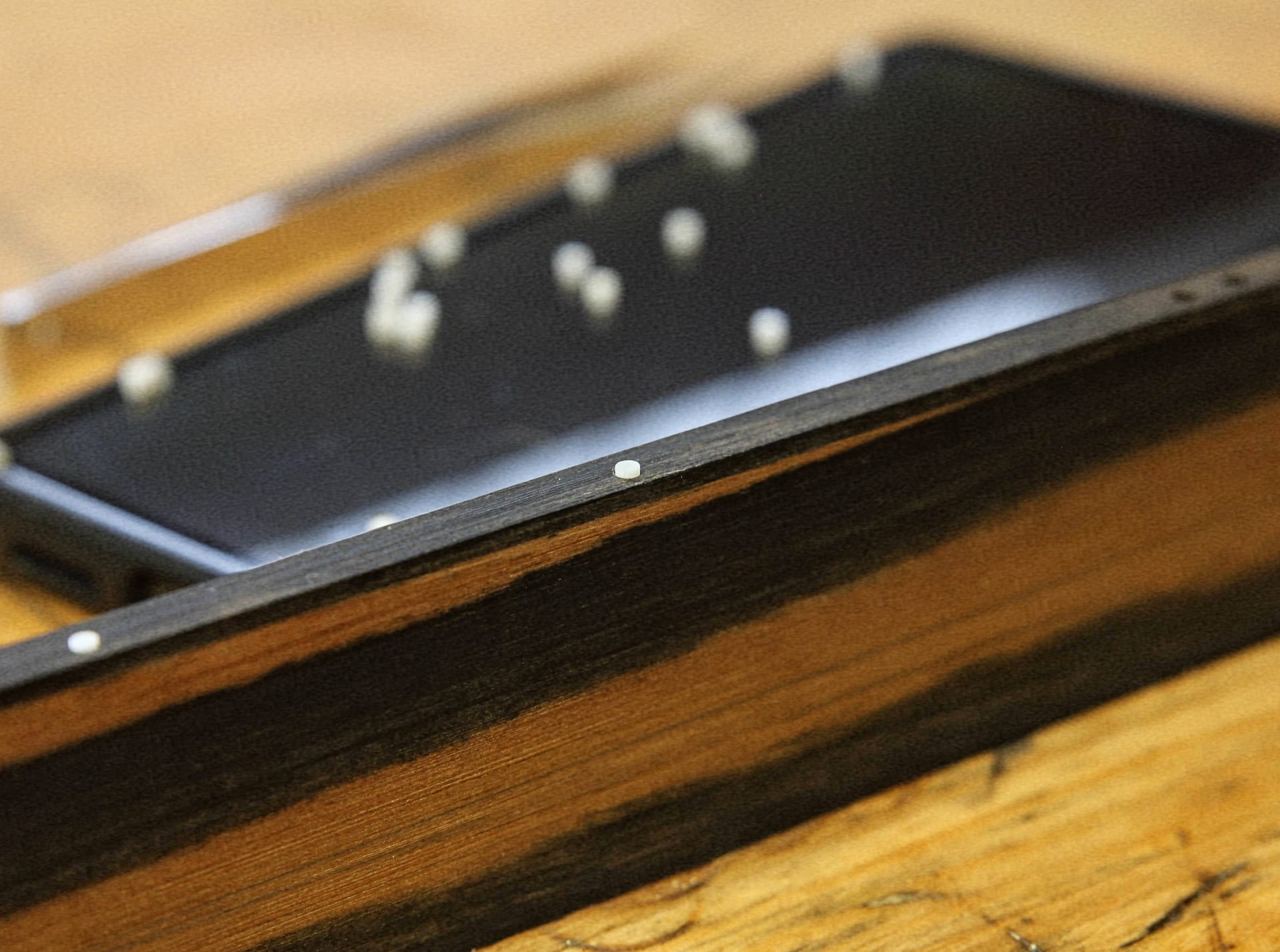 The fretboard was glued to the neck using epoxy glue:  then radiused, by hand: 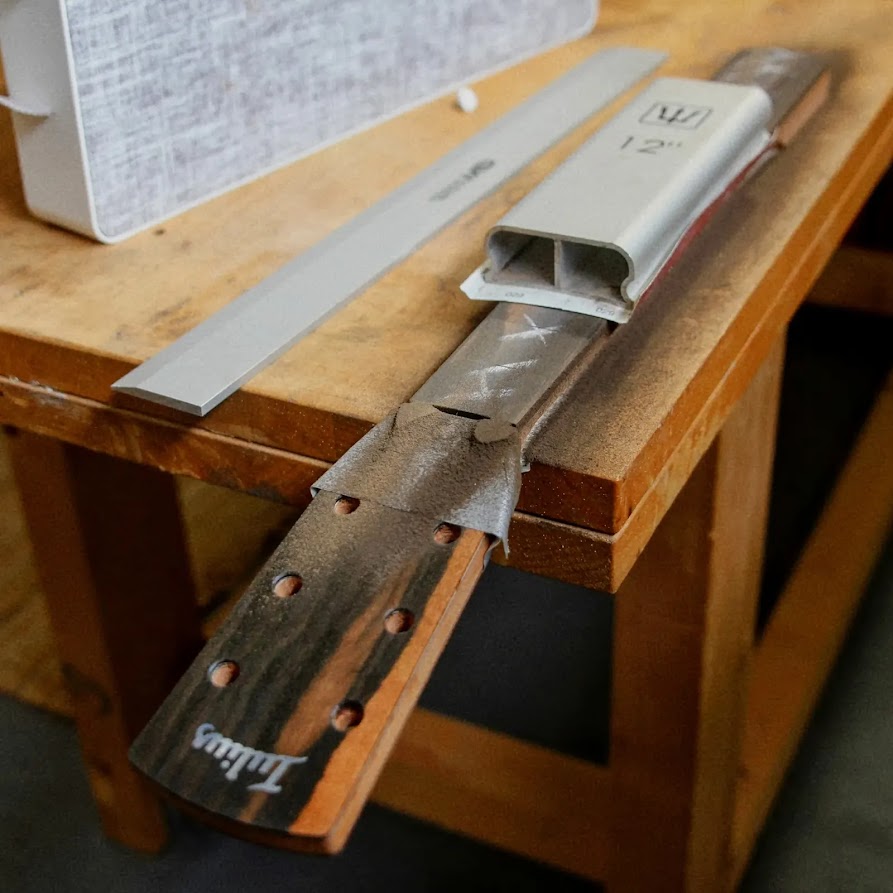 At this stage I carve the neck, using the faceting technique: 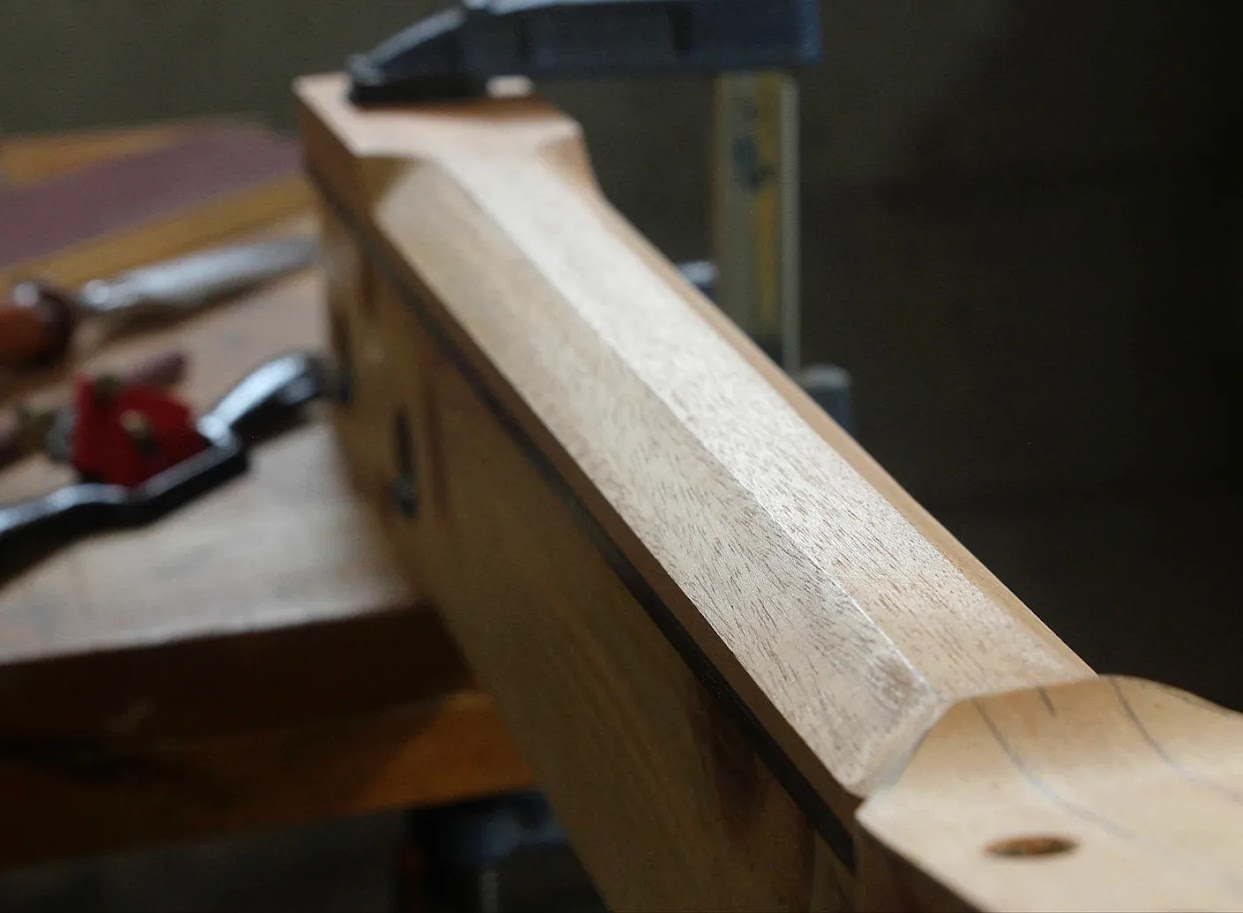 And the volute of the headstock: 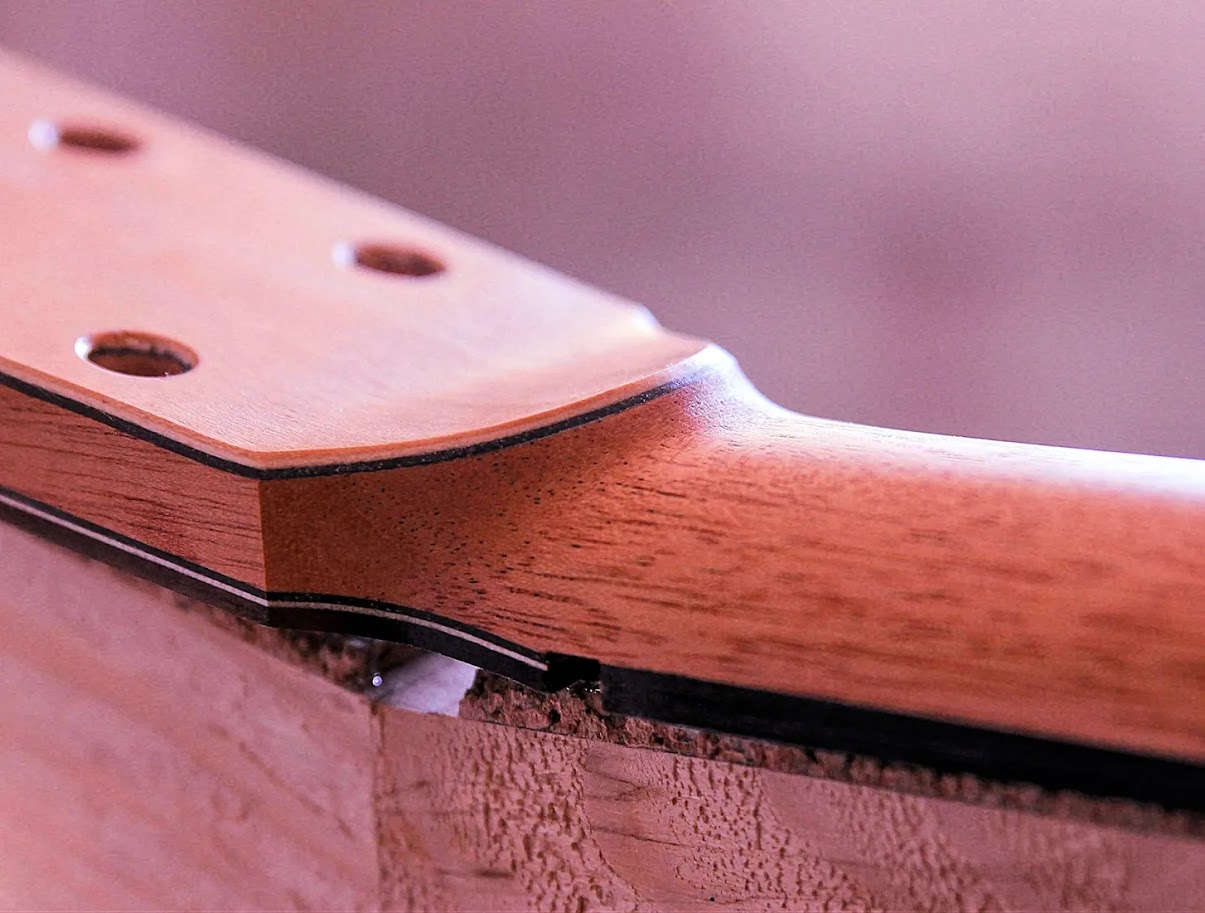 Here's the two different back plates: 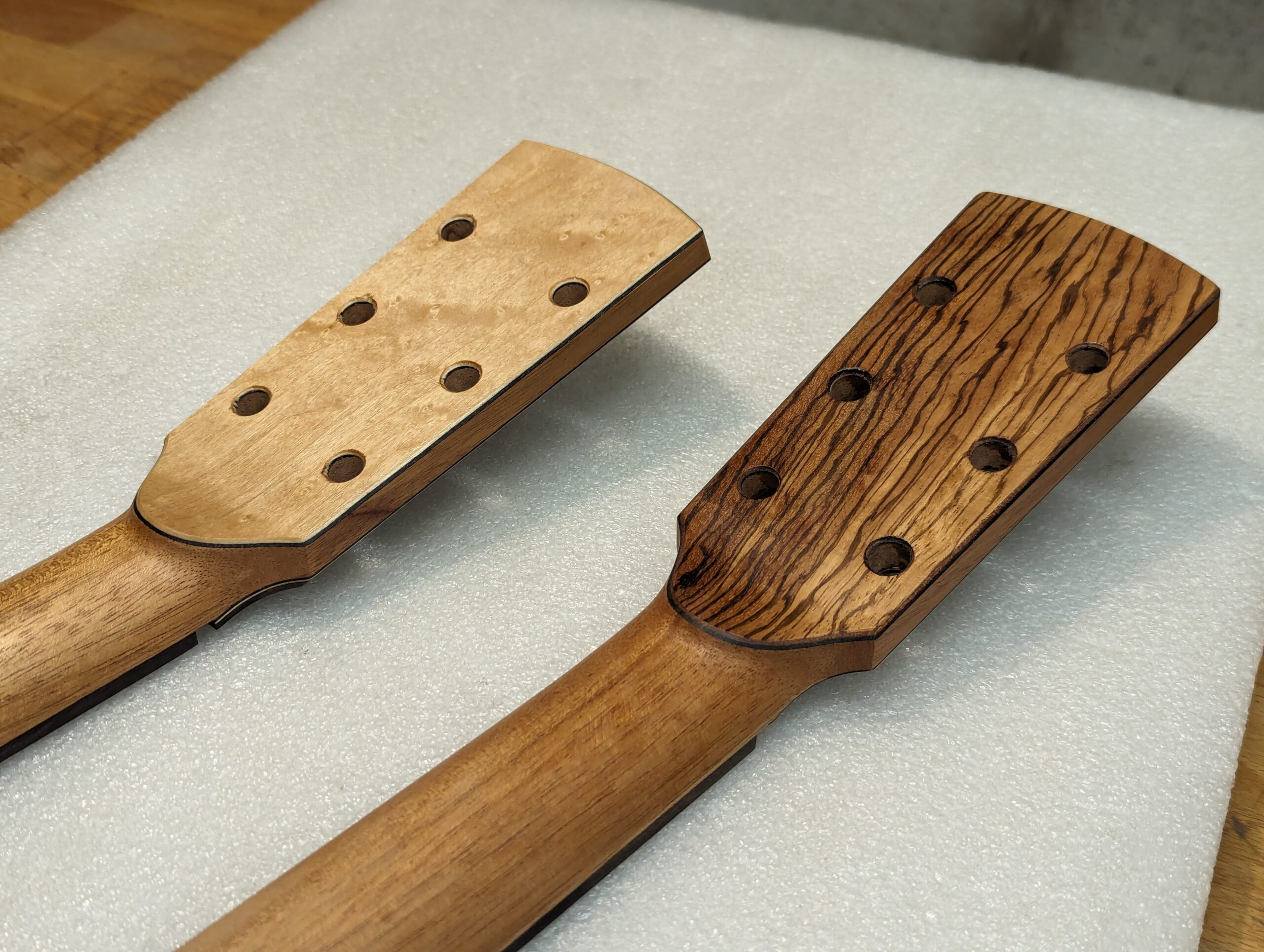 The fretting, using the press (I dont like using the hammer over my necks...): 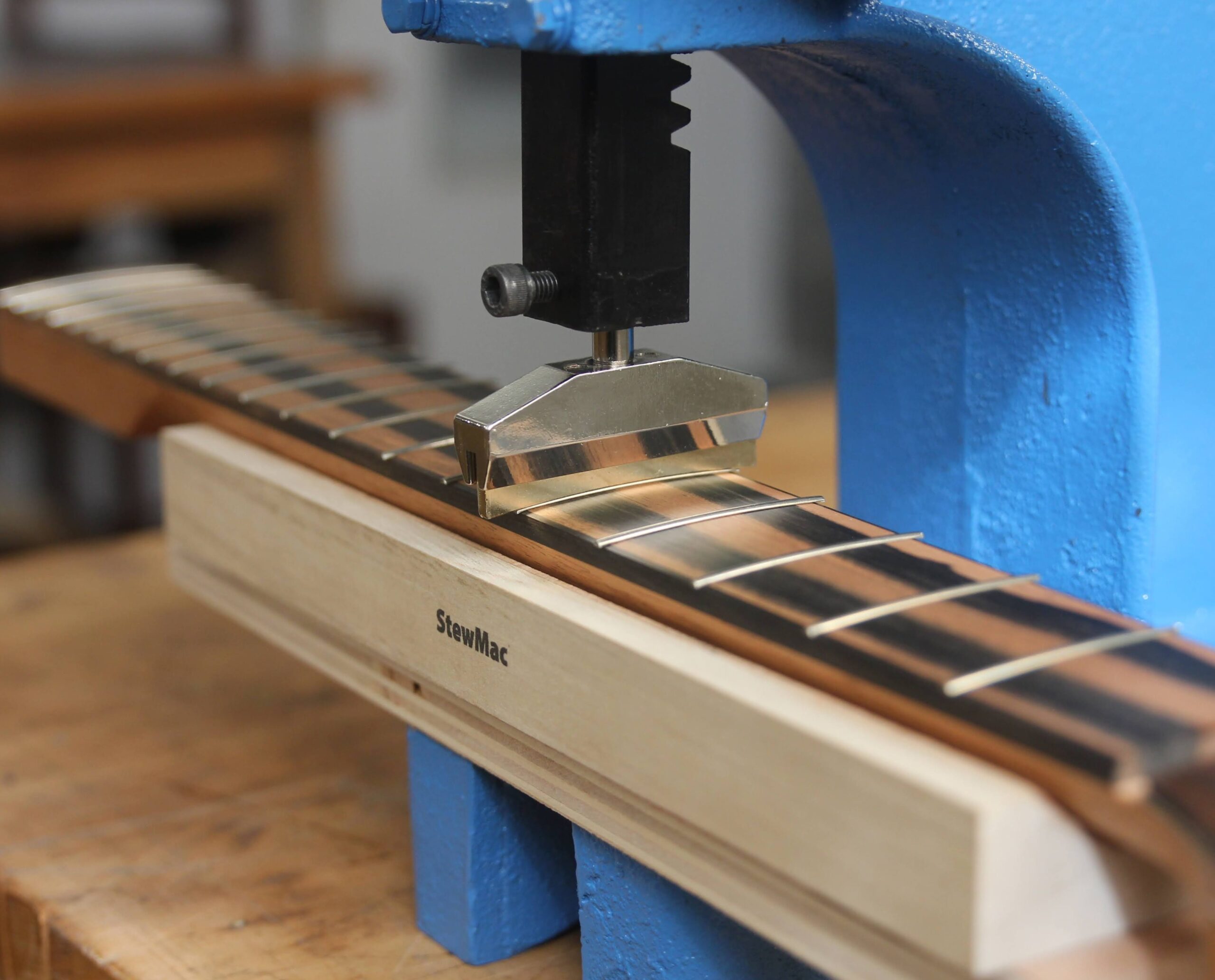 And here we are, two necks waiting for final details: 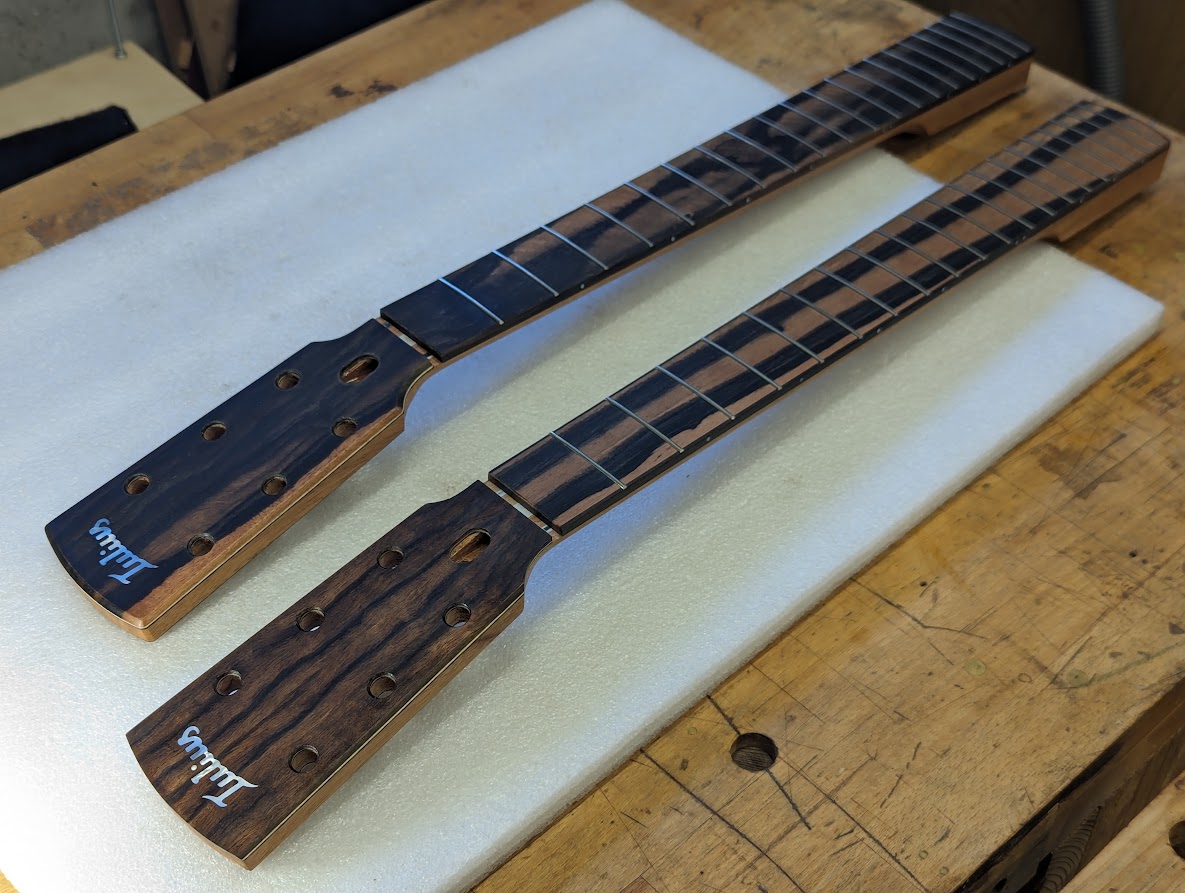 Cheers, Giuliano |
|
#27
|
|||
|
|||
|
Wow! Beautiful work! And both headplates look stunning! I think that you matched them well to their respective fingerboards.
__________________
Franklin Jumbo African Blackwood/German Spruce Franklin Dread Mahogany/Adirondack 1929 Martin 2-17 |
|
#28
|
||||
|
||||
|
Hello folks!
Moving on with the build, here's focus of the CNC working on the tailblock; the central recess is the slot that hosts the external tuning mass, an original feature of the Orchestra model that I will detail in a later step. 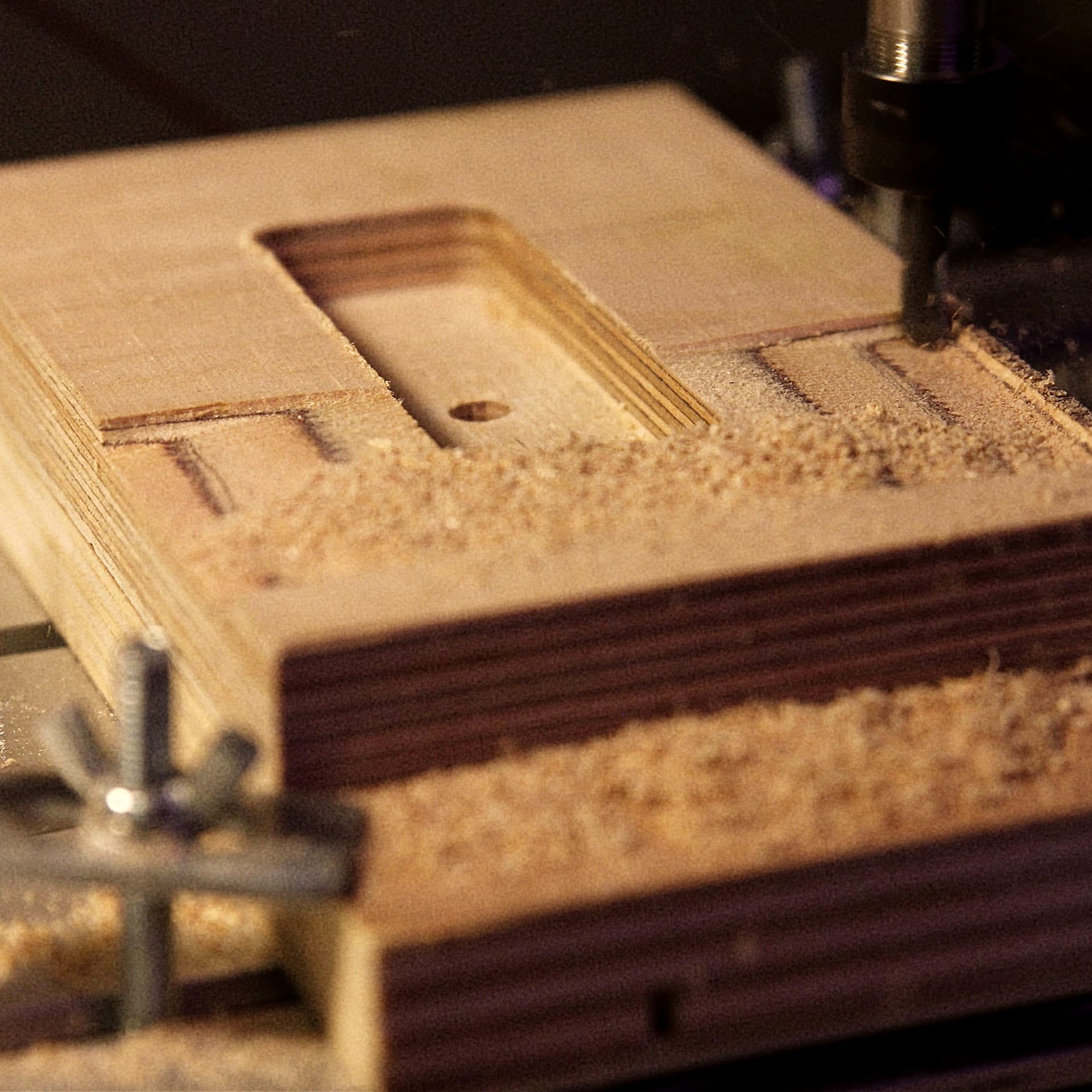 Here you can see both the tailblock and the headblocks, and the complete assembly with the sides. Also the headblock is quite original, as it holds the overhang bolt-on neck, entering in the bended soundboard.  The back has a simple classic 15 foot radius, while the soundboard has a complex profile, therefore sides have to be perfectly shaped to be a clean match. The final shape of sides - top view - is clear on this frontal view: 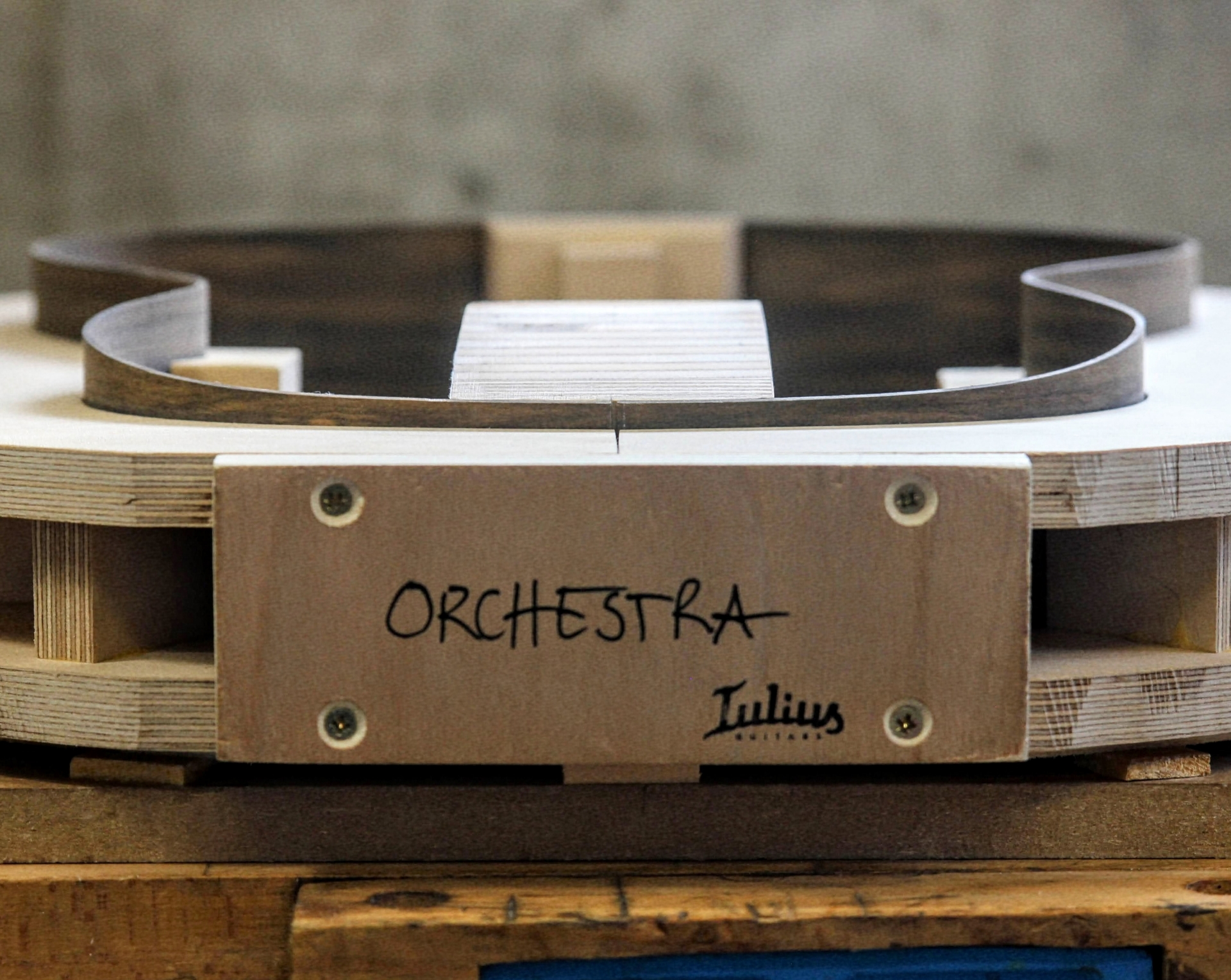 Now the sides are ready to receive the kerfed linings, and then soundboard and back on! See you soon! Giuliano |
|
#29
|
|||
|
|||
|
I am following this with great interest. Thenks for posting these photos; keep them coming!
__________________
Franklin Jumbo African Blackwood/German Spruce Franklin Dread Mahogany/Adirondack 1929 Martin 2-17 |
|
#30
|
||||
|
||||
|
Hi folks !
The linings are glued to the sides, and now it’s time to fine tune the main resonances of the soundboard, before closing the box. 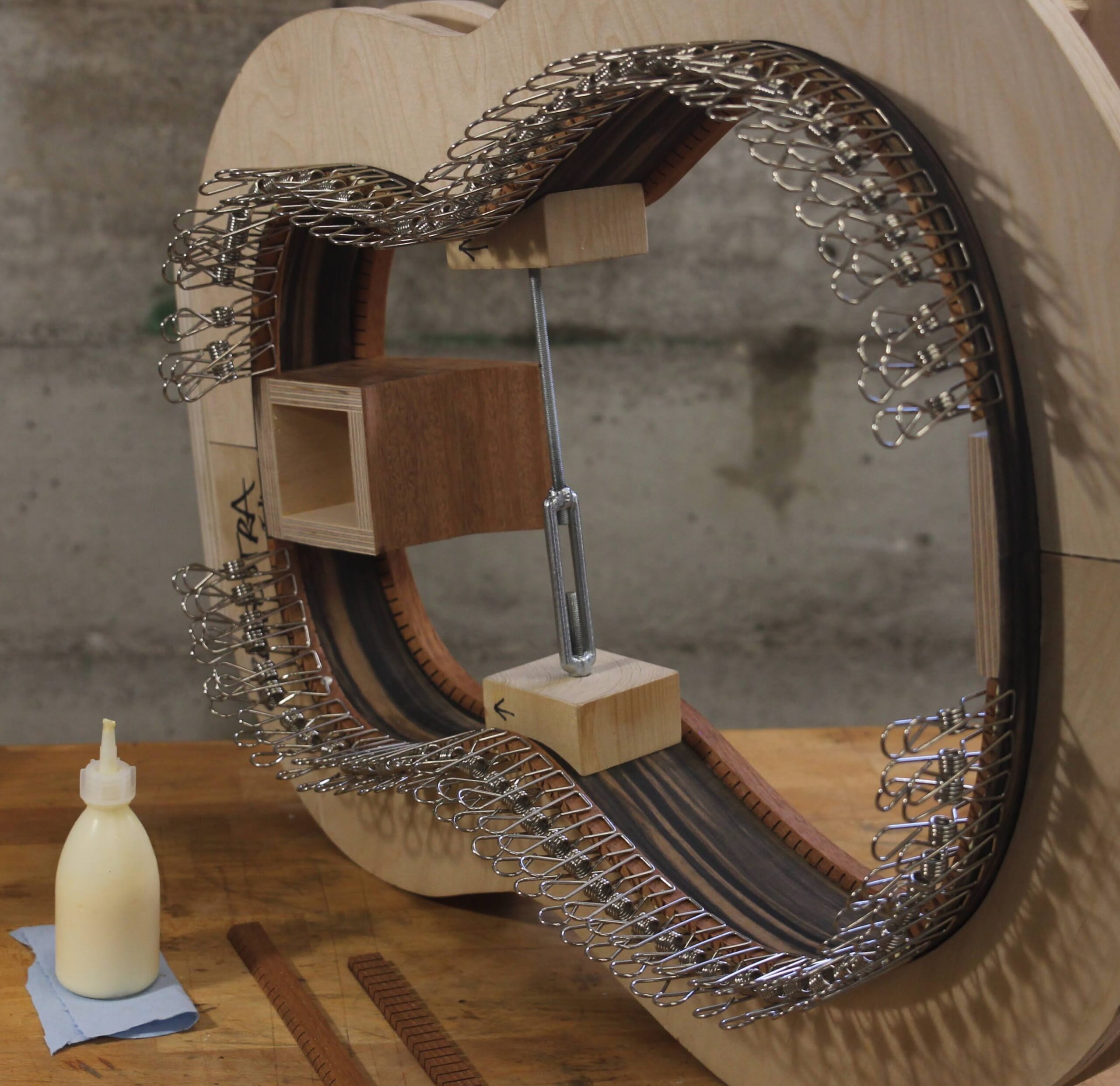 And a classic go-bar deck to glue the soundboard on the sides: 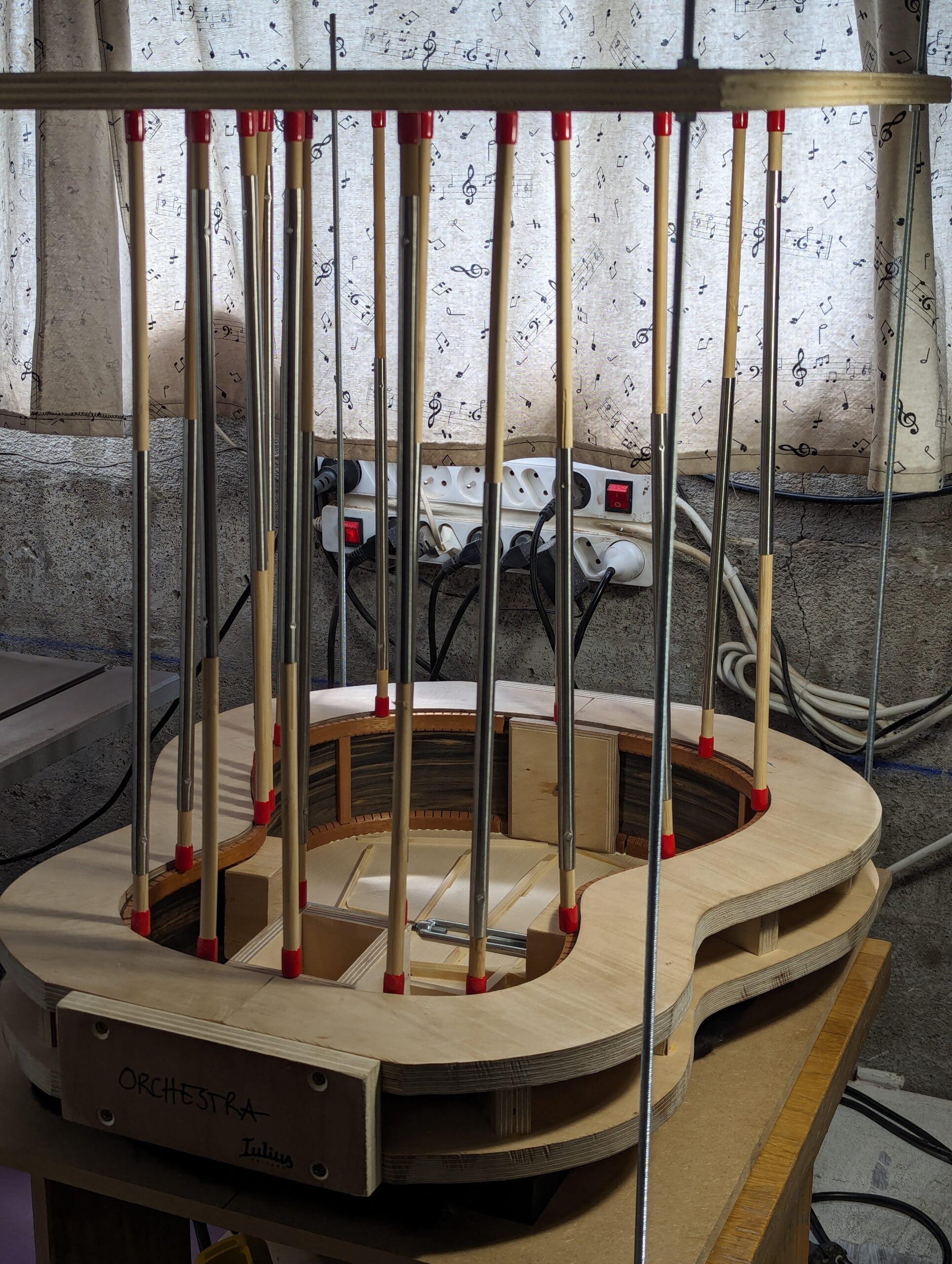 As the back is not glued yet, it is important to use the mold to block the sides and avoid added resonances. 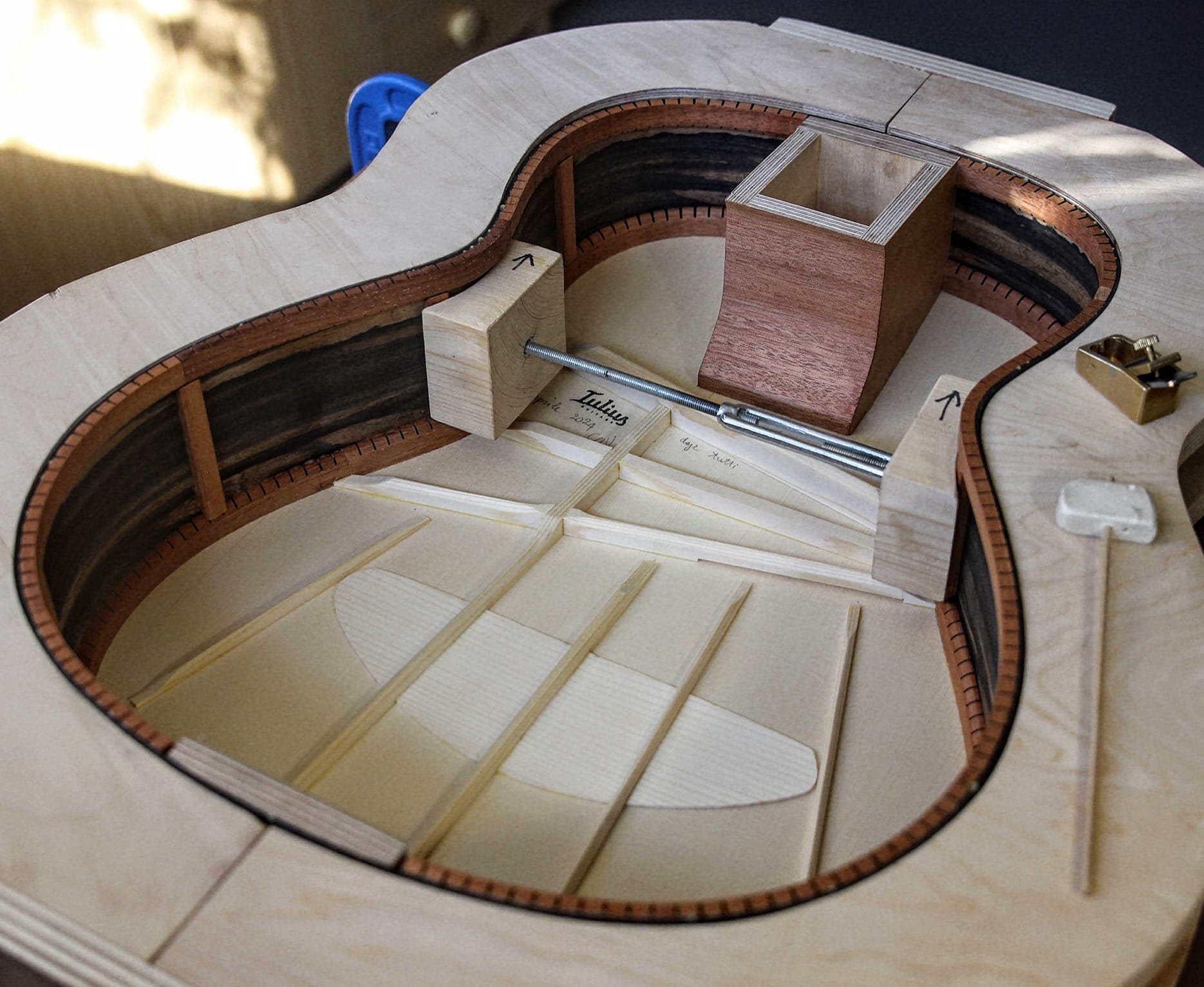 The frequency I am reading at this stage of the build is very different from the final one, but I know how the soundboard must behave in these conditions, from previous measurements and tuning of the same model, and I can proceed to focus on my target slightly shaving the bracing to tune the main monopole and the dipoles resonance frequency. Here a short reel that describes the process: Once I am satisfied with results, a final cleaning, a coat of shellac to seal and protect from dust, and I prepare the assembly to receive the back. If you want more info about this process, dont be shy!  Cheers, Giuliano |